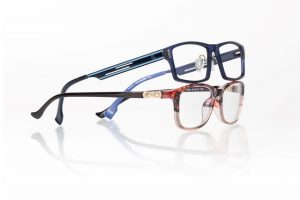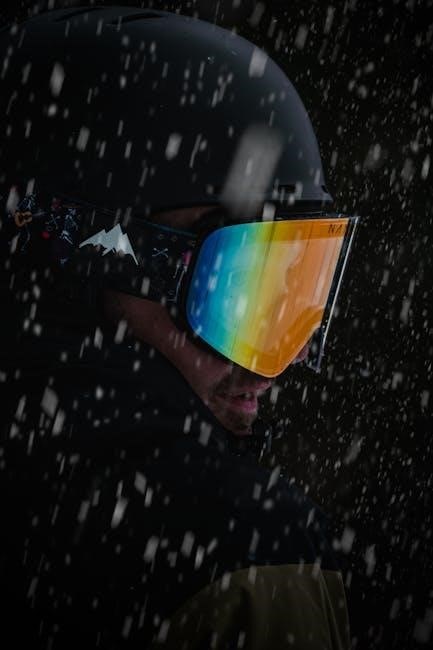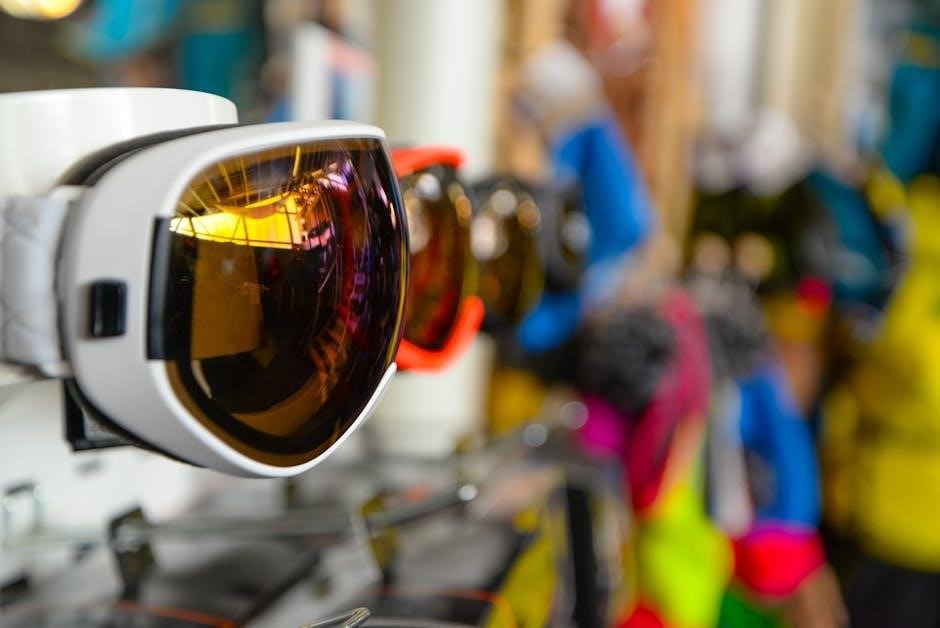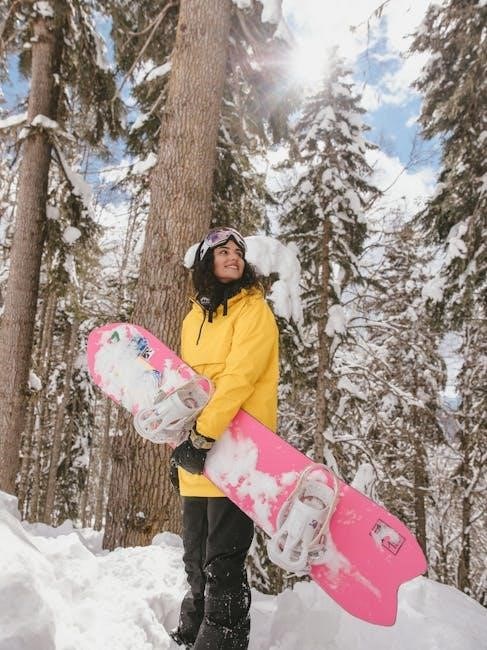ski goggles lens colour guide

Discover how ski goggle lens colors enhance visibility and protection. This guide explains the importance of tints for various skiing conditions, helping you choose the best option.
Why Lens Color Matters for Skiing and Snowboarding
Lens color in ski goggles plays a critical role in enhancing visibility and protecting eyes from harsh conditions. Different tints mitigate glare, improve contrast, and optimize vision in varying light. For instance, yellow and amber lenses excel in low-light scenarios by enhancing definition, while rose and orange lenses are ideal for flat light, reducing eyestrain. Blue and green lenses minimize glare in bright conditions, and black or gradient lenses offer maximum UV protection. The right lens color ensures better performance, safety, and comfort, making it essential to match the tint to specific skiing or snowboarding conditions. Proper lens selection can significantly improve your experience on the slopes.
Overview of Different Lens Colors Available
Modern ski goggles offer a wide range of lens colors, each designed for specific conditions. Yellow and amber lenses enhance low-light visibility, while rose and orange lenses are tailored for flat light and overcast days. Blue and green lenses are ideal for sunny conditions, reducing glare and providing clarity. Black and gradient lenses deliver maximum light protection, suitable for extremely bright environments. Additionally, dual-lens technology combines two tints for versatility, and specialized features like anti-fog coatings, UV protection, and polarization further enhance performance. With options for every scenario, skiers and snowboarders can choose lenses that match their needs, ensuring optimal vision and comfort on the slopes.

Understanding Lens Colors and Their Purposes
Ski goggle lens colors are designed to optimize vision in specific conditions, enhancing details and protecting eyes from harmful light.
Yellow and Amber Lenses for Low Light Conditions
Yellow and amber lenses are ideal for low-light skiing and snowboarding conditions. They enhance contrast and improve visibility by allowing more visible light to pass through, making them perfect for overcast or flat-light days. These tints reduce eye strain and help skiers see terrain details more clearly, even in snowy or foggy environments. With higher VLT (Visible Light Transmission), yellow and amber lenses are a great choice for early morning or late afternoon skiing when light is limited. They also provide excellent UV protection, ensuring your eyes stay safe while enjoying the slopes. For skiers who frequently face low-light conditions, yellow and amber lenses are a practical and performance-enhancing option.
Rose and Orange Lenses for Flat Light and Overcast Days
Rose and orange lenses are designed to excel in flat light and overcast conditions, providing enhanced contrast and reducing glare. These tints work by filtering out blue light, which is prevalent in cloudy environments, improving definition and making it easier to spot terrain features. With moderate VLT, they strike a balance between letting in enough light while maintaining clarity. Orange lenses are slightly darker than rose, offering better light protection without sacrificing visibility. Both options are ideal for skiers and snowboarders who often face challenging, low-contrast lighting. By enhancing depth perception and reducing eye strain, rose and orange lenses help athletes perform confidently in difficult weather conditions.
Blue and Green Lenses for Bright and Sunny Conditions
Blue and green lenses are tailored for bright, sunny days on the slopes. These tints reduce glare from the sun and reflective snow surfaces, enhancing visibility and comfort. With lower VLT, they minimize the amount of light entering the goggles, making them ideal for high-light environments. Blue lenses are particularly effective at reducing glare from ice and snow, while green lenses offer a balanced view with natural color perception. Both options are perfect for skiers and snowboarders who prioritize sharp vision in sunny conditions. By reducing eye strain and improving contrast, blue and green lenses help athletes navigate the terrain with confidence and precision, even on the brightest days.
Black and Gradient Lenses for Maximum Light Protection
Black and gradient lenses are designed to provide maximum light protection, making them ideal for extremely bright and sunny conditions. Black lenses have very low VLT (Visible Light Transmission), effectively reducing glare and shielding eyes from intense light. Gradient lenses offer a unique advantage by providing darker tints at the top and lighter shades at the bottom, reducing glare from the sky while maintaining visibility of the terrain below. Both options are perfect for skiers and snowboarders who encounter harsh sunlight. By minimizing light entry and enhancing contrast, black and gradient lenses ensure optimal vision and comfort, helping athletes perform at their best even in the brightest environments.

Visible Light Transmission (VLT) and Its Impact
VLT measures how much light passes through a lens. Lower VLT reduces glare in bright conditions, while higher VLT enhances visibility in low-light settings, optimizing performance and safety.
How VLT Affects Light Entry and Visibility
Visible Light Transmission (VLT) determines how much light enters your goggles, directly impacting visibility. Lower VLT lenses (e.g., 10-20%) reduce glare in sunny conditions by blocking more light, making them ideal for bright, snowy days. Higher VLT lenses (e.g., 70-90%) allow more light in, enhancing visibility during low-light or overcast conditions. This balance is crucial for performance, as too much light can cause glare, while too little can make it difficult to see terrain features. Choosing the right VLT ensures optimal clarity and comfort, whether you’re skiing under clear skies or navigating cloudy, flat-light environments. Proper VLT selection enhances your ability to read terrain and react quickly, improving overall safety and enjoyment on the slopes.
Choosing the Right VLT for Different Skiing Conditions
Selecting the appropriate VLT for your skiing conditions is essential for optimal performance. For sunny days, a lower VLT (10-30%) reduces glare and enhances contrast, improving visibility on snow. In overcast or flat-light conditions, higher VLT (60-90%) increases light entry, helping you see terrain features more clearly. If you often ski in varying conditions, consider goggles with interchangeable lenses or photochromic options that adjust VLT automatically. Additionally, personal preference plays a role, as some skiers prefer brighter or dimmer environments. Matching your goggle’s VLT to the specific lighting ensures better visual clarity, reducing eye strain and enhancing your overall skiing experience. This tailored approach helps you adapt to changing mountain conditions seamlessly.

Specialized Features in Modern Ski Goggles Lenses
Modern ski goggles feature dual lenses for fog resistance, anti-reflective coatings, UV protection, and polarized options to reduce glare. These innovations enhance performance and comfort on the slopes.
Dual Lens Technology for Enhanced Performance
Dual lens technology in ski goggles offers improved thermal insulation by minimizing fogging. It reduces condensation between lenses, ensuring clear vision. This feature is especially beneficial in cold, humid conditions. Dual lenses also provide better optical clarity and reduce distortion. They are commonly paired with anti-fog coatings for enhanced performance. This technology is a significant advancement, offering reliability and comfort. It helps maintain visibility, crucial for safety. Dual lens systems are a popular choice among skiers and snowboarders. They combine functionality with durability, making them a worthwhile investment for winter sports enthusiasts. This innovation ensures optimal performance across various weather conditions. Dual lenses are a testament to modern goggle technology.
Anti-Fog Coatings and UV Protection
Anti-fog coatings are essential for maintaining clear vision in ski goggles. These hydrophilic treatments prevent moisture buildup, reducing fog formation. UV protection is equally crucial, shielding eyes from harmful rays. Many goggles feature UV 400 protection, blocking 99-100% of UVA and UVB rays. This ensures eye safety, especially at high altitudes. Anti-reflective coatings also minimize glare. Combined, these features enhance visibility and comfort. Proper maintenance, like avoiding harsh chemicals, preserves their effectiveness. Anti-fog and UV coatings are vital for optimal performance and eye health. They are standard in quality goggles, offering reliability in diverse conditions. These technologies contribute significantly to an enjoyable skiing experience. Always look for goggles with these features for superior protection and clarity.
Polarized Lenses for Reduced Glare
Polarized lenses in ski goggles are designed to reduce glare from reflective surfaces like snow and ice. They work by filtering out horizontally polarized light waves, which are the primary cause of glare. This results in improved visibility and reduced eye strain, especially in bright, sunny conditions. Polarized lenses are particularly beneficial for skiers and snowboarders who frequently encounter harsh light reflections. However, they may not be ideal for low-light conditions or when reading digital screens. Many modern goggles offer polarized options alongside other features like UV protection and anti-fog coatings. By minimizing glare, polarized lenses enhance clarity and safety on the slopes, making them a valuable option for outdoor enthusiasts. They are a popular choice for those seeking optimal visual comfort in challenging light environments;

Practical Tips for Selecting the Best Lens Color
Choose lens colors based on light conditions, personal preference, and Visible Light Transmission (VLT). Consider weather, terrain, and skiing style for optimal visibility and comfort.
Considering Personal Preference and Skiing Style
When selecting a lens color, personal preference and skiing style play a significant role. Bright conditions may call for darker tints like blue or black, while low-light scenarios benefit from yellow or amber lenses. Skiers who prioritize contrast in flat light often opt for rose or orange tints. Additionally, consider your skiing environment—whether you’re in snowy, sunny, or overcast conditions. Some riders prefer neutral colors for accurate visibility, while others value enhanced contrast for better depth perception. Combining personal comfort with the specific demands of your skiing style ensures the best performance. Always test lens colors in real conditions to find your ideal match.
Matching Lens Color to Specific Weather Conditions
Choosing the right lens color for specific weather conditions is crucial for optimal visibility and eye protection. For sunny days, blue or green lenses reduce glare and enhance contrast, while black or gradient lenses offer maximum light protection. In low-light or cloudy conditions, yellow or amber lenses improve visibility by allowing more light in. Rose or orange lenses are ideal for flat light or overcast days, as they enhance contrast and reduce eye strain; For snowy or whiteout conditions, yellow or amber lenses help improve definition and reduce glare. Each lens tint is designed to filter light differently, ensuring better vision and comfort in varying weather. By matching your lens color to the conditions, you can enhance your skiing experience and safety on the slopes.

Caring for Your Ski Goggles Lenses

Properly clean lenses with a soft cloth to avoid scratches. Store goggles in a protective case to prevent damage and exposure to harsh conditions.
Proper Maintenance to Preserve Lens Quality
Regular cleaning and storage are crucial for maintaining ski goggle lens quality. Always use a soft, dry cloth to wipe away dirt and moisture, avoiding harsh chemicals that can damage coatings. For stubborn smudges, lightly dampen the cloth with water, but ensure the lens is completely dry before storage. Store goggles in a protective, hard-shell case to prevent scratches and impact damage. Avoid exposing lenses to extreme temperatures or direct sunlight for prolonged periods, as this can degrade UV protection and anti-fog treatments over time. Proper care ensures optimal performance, clarity, and longevity of your ski goggle lenses.
Avoiding Scratches and Damage
To prevent scratches and damage to your ski goggle lenses, handle them with care. Always store them in a protective case or pouch when not in use to shield against impacts and abrasive surfaces. Avoid touching the lenses directly, as oils from your skin can leave residue. For cleaning, use a soft, microfiber cloth to gently wipe away dirt or snow. Never use harsh chemicals, abrasive wipes, or rough fabrics, as these can scratch the surface or strip away protective coatings. Regular inspections can help identify minor scratches before they worsen. By adopting these habits, you can protect your lenses and maintain their clarity and performance for years to come.